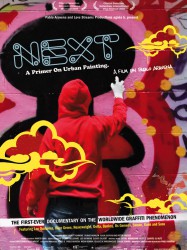Les films ayant le thème "Documentaire sur l'art", triés par recette

Tintin et moi (2004)
, 1h14Réalisé par Anders Østergaard
Origine France
Genres Documentaire
Thèmes Mise en scène d'un animal, La bande dessinée, Documentaire sur l'art, Documentaire sur une personnalité, Mise en scène d'un chien, Tintin, Documentaire sur la bande dessinée, Films pour enfants, Mise en scène d'un mammifère
Acteurs Hergé, Andy Warhol
Le film revient sur la carrière d'Hergé, mais surtout sur l'homme qu'il était, en mettant en image de nombreux extraits des bandes son originales des entretiens avec Numa Sadoul. La mise en scène, volontairement sobre, est accompagné de diverses images d'archives et d'entretiens avec des spécialistes et amis d'Hergé. Les divers entretiens avec des critiques suivent tous la même scénographie : ils se déplace dans une salle entièrement pavée de planches, s'arrêtent, les commentent, jusqu'à ce que la caméra aille se placer au-dessus d'eux, révélant les preneurs de sons, chef opérateurs, etc.

Arakimentari (2004)
, 1h25Origine Etats-Unis
Genres Documentaire
Thèmes Documentaire sur l'art, Documentaire sur une personnalité
Acteurs Takeshi Kitano, Björk, Richard Kern
Dans un kimono rouge, ses bras fermement liés, elle regarde l'objectif avec une expression vide. Derrière l'appareil un curieux petit bonhomme est entrain de marmonner et de prendre des photos avec cinq appareils différents, trempé et excité comme le diable. Il s'agit de Nobuyoshi Araki, le plus controversé et le plus célébré des artistes japonais du monde. Ce documentaire exceptionnel vous fera rentrer dans sa légende...
 , 27minutes
, 27minutesOrigine Etats-Unis
Genres Documentaire
Thèmes Film sur un écrivain, Journalisme, Maladie, Le suicide, Documentaire sur l'art, Documentaire sur une personnalité, Documentaire sur la santé, Folie, Le handicap

In the Realms of the Unreal (2004)
, 1h21Réalisé par Jessica Yu
Origine Etats-Unis
Genres Documentaire
Thèmes Documentaire sur l'art, Documentaire sur une personnalité
Acteurs Larry Pine, Wally Wingert, Dakota Fanning

Otaku Unite! (2004)
, 1h10Origine Etats-Unis
Genres Documentaire
Thèmes Documentaire sur l'art, Documentaire sur une personnalité
Acteurs Peter Fernandez, Carl Macek, Matt K. Miller, Corinne Orr

Ryan (2004)
, 13minutesRéalisé par Chris Landreth
Origine Canada
Genres Drame, Documentaire, Fantasy, Animation
Thèmes Alcoolisme, Film traitant du cinéma, Maladie, Psychotrope, Documentaire sur le monde des affaires, Documentaire sur l'art, Documentaire sur le cinéma, Documentaire sur le droit, Documentaire sur une personnalité, Documentaire sur la santé, Folie, Le handicap
Acteurs Ryan Larkin, Chris Landreth

Black Sun (2006)
, 1h10Origine Etats-Unis
Genres Documentaire
Thèmes Documentaire sur le monde des affaires, Documentaire sur l'art, Documentaire sur le cinéma, Documentaire sur une personnalité, Le handicap
Un soir de 1978, Hugues de Montalembert, peintre et réalisateur, est agressé dans son appartement de New York. Alors qu’il se défend, il reçoit du décapant dans les yeux. Quelques heures plus tard, il a perdu la vue pour toujours. Au fil des mois, il se réapproprie son quotidien et commence à voyager, seul, en Indonésie ou en Inde. Un nouveau monde de perceptions s’ouvre alors à lui.
 , 52minutes
, 52minutesGenres Documentaire
Thèmes Documentaire sur l'art, Documentaire sur une personnalité
Filmmaker John J Doherty traces the life and work of the Irish artist, book illustrator and stained glass artist Harry Clarke (1889–1931) with major contributions from his biographer Nicola Gordon Bowe as well as many stained glass artists, poets and historians. The film takes the artist's work in stained glass, which was mainly religious & ethereal, and in book illustration, which was mainly dark & fantastical, as the basis for its title and tells a story of talent, struggle, success and the censorship of his final masterpiece 'the Geneva Window'. Harry Clarke brought his expertise in working in fine decorative detail in glass to his book illustrations, most notably in the tales of Hans Christian Andersen and Edgar Allan Poe where he is compared to Aubrey Beardsley and which are featured in the film and paralleled with German Expressionist cinema of the time. The film was made in conjunction with the Irish Film Board and national broadcaster TG4.

Dream on Silly Dreamer (2005)
, 40minutesOrigine Etats-Unis
Genres Documentaire, Animation
Thèmes Documentaire sur le monde des affaires, Documentaire sur l'art, Documentaire sur le cinéma, Films pour enfants
Acteurs Andreas Deja

The Mindscape of Alan Moore (2003)
Genres Documentaire
Thèmes Documentaire sur l'art, Documentaire sur une personnalité
Acteurs Alan Moore
Alan Moore presents the story of his development as an artist, starting with his childhood and working through to his comics career and impact on that medium, and his emerging interest in magic.

Piece By Piece (2005)
, 1h18Réalisé par Nic Hill
Origine Etats-Unis
Genres Documentaire
Thèmes Documentaire sur l'art, Documentaire sur une personnalité
The first segment of Piece by Piece lays out the fundamentals of San Francisco graffiti by documenting topics that laid the groundwork for artists today. Items covered are “Cholo” writing, the impact of PBS's Style Wars (1983), and the development of San Francisco's defined style. This segment includes not only San Francisco's graffiti originals, but also commentary from noted New York writers such as Seen, Cope2 and Case2. It also covers the life and death of Dream One, a San Francisco graffiti pioneer and a vocal figurehead in Bay Area urban welfare activism.

Les Routes de Kiarostami (2006)
, 32minutesRéalisé par Abbas Kiarostami
Genres Documentaire
Thèmes Documentaire sur l'art, Documentaire sur une personnalité
Acteurs Abbas Kiarostami
 Connexion
Connexion

